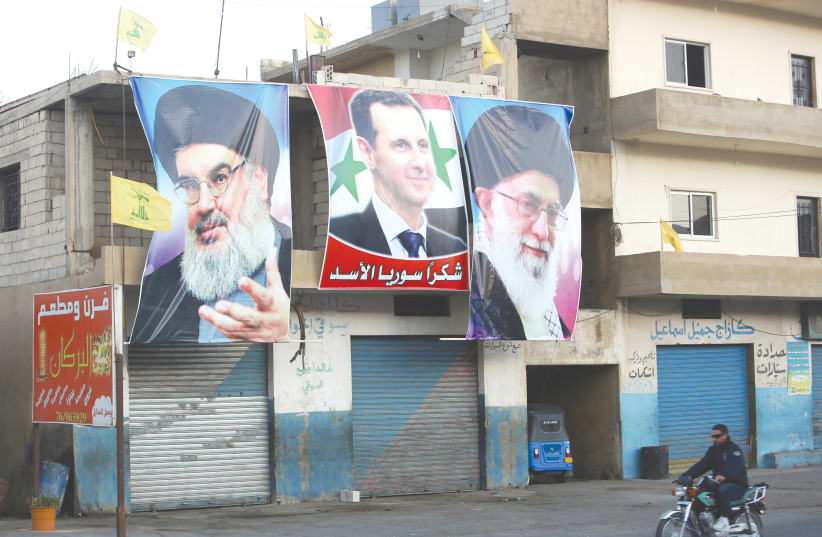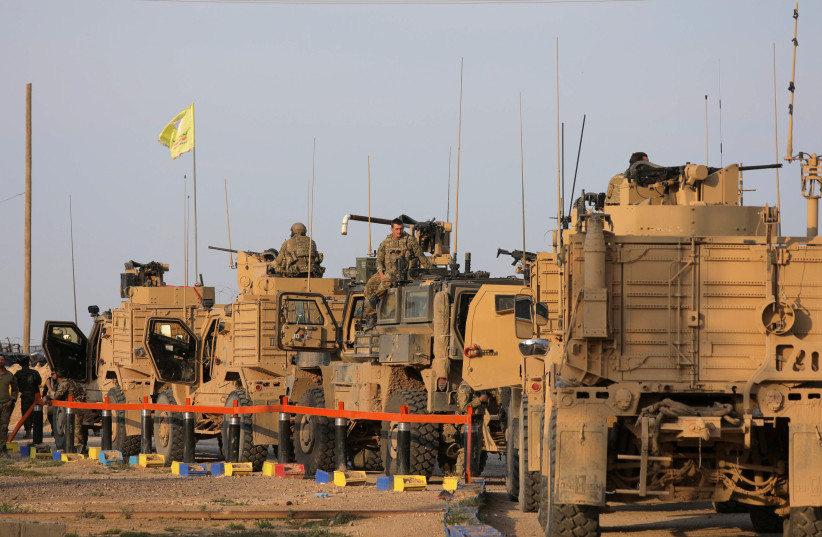The airstrikes the US carried out against Iran-backed forces in Syria last week are continuing to reverberate across the region. The Syrian regime, backed by Iran and Russia, is taking a tougher stance than in the past.
The regime has condemned the US strikes, and US President Joe Biden also warned on Friday that the US would “act forcefully” to protect Americans. Nevertheless, Iranian-backed militias in Syria carried out more attacks on US forces on Friday, striking a base and wounding a US service member.
This war of words between Washington and Syria is interesting and important. It mirrors similar statements being made by Israel and Hezbollah in the wake of an infiltration in mid-March, where a man suspected of having infiltrated from Lebanon planted a bomb near a road junction near Megiddo.
Hezbollah is suspected of involvement and has been heating up its own rhetoric warning Israel and seeking to deter Israel from any response.
Several aspects to the escalation
There are several sides to the recent Syria escalation that are worth looking at. First of all Iran’s IRGC, which is a US-designated terror group, and backs the militias that carried out the attacks last week. This likely includes a connection to Syrian based Iranian-backed militias and also the pro-Iranian militias present in Iraq. It comes in the wake of the visit to Syria by one of America’s top generals.
At the same time Syria’s threats come with effects on the ground. The militias are seeking to respond to the US strikes with more attacks of their own. This isn’t the first time there has been a back-and-forth but it appears the Syrian regime is seeking to draw some kind of a red line.
The regime wants to pressure the US to leave Syria and is acting in concert with Iran and the militias. Meanwhile the regime has normalized ties in the Gulf and is seeking more normalization across the Middle East. This means the regime wants to use normalization as a possible pressure point against the US, using Iranian militias because it can then deny responsibility. This is also how Iran operates in Lebanon, using Hezbollah to threaten Israel and then getting the Lebanese government to benefit by pretending it is not responsible.
At the same time there are concerns in Congress about the role of the US in Syria. There are critics on the Right and the Left and it involves a domestic US political issue.
US Senator Tom Cotton noted “Indefensible that American life must be lost before Joe Biden acts. Had he responded in force to dozens of earlier Iranian attacks, this tragedy could have been prevented."
"[The US Secretary of Defense] needs to explain why he isn’t doing more to deter Iran. The White House informed Congress of the strikes because it appears to be more concerned about some of the voices of opposition to the US role in Syria."
The White House said that the strikes were carried out "in order to protect and defend the safety of our personnel, to degrade and disrupt the ongoing series of attacks against the United States and our partners, and to deter the Islamic Republic of Iran and Iran backed militia groups from conducting or supporting further attacks on United States personnel and facilities.”
Why such a large spotlight?
Why has this round of Iranian-backed attacks and US retaliation received such a large spotlight? According to Air and Space Forces Magazine “Iranian-backed forces have attacked US troops in Syria around 80 times since the start of 2021.”
Only some of these attacks receive a lot of attention, usually when US citizens are killed and then the US retaliates. Now it appears that Iran and its proxies may be plotting more attacks in Syria or further abroad.
The decision by Iran and the Syrian regime to highlight the attacks shows their growing confidence in confronting the US. Similarly Hezbollah appears to be sending the same message. This message discipline across groups linked to Iran is likely part of a new Iranian push in the region that could involve Syria, Iraq, Lebanon or other areas used to threaten the US and Israel. Due to the recent Iran-Saudi Arabia deal and also Syria’s reconciliation in the Gulf, Iran may believe it can now pivot to focus on the US, having basically neutralized some other countries that opposed its presence.

